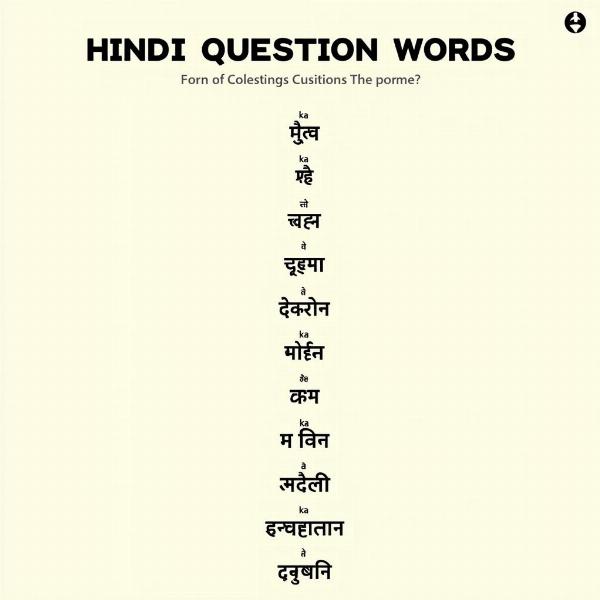Understanding the meaning of “isn’t it” in Hindi can be tricky, as a direct, single-word translation doesn’t exist. Its meaning depends heavily on the context and its function in a sentence – whether it’s seeking confirmation, expressing surprise, or adding emphasis. Instead of one word, Hindi uses different phrases or particles to convey the nuances of “isn’t it?”
Different Ways to Say “Isn’t It” in Hindi
Hindi offers various ways to express the sentiment behind “isn’t it?” The most suitable option depends on the context. Here’s a breakdown of common equivalents:
- क्या (Kya): This is the most basic way to form a question in Hindi, often used when seeking confirmation. When attached to a statement, it can function like “isn’t it?”. For example, “Acha hai, kya?” (It’s good, isn’t it?)
- है ना (Hai na): This is a more colloquial and common way of saying “isn’t it?”. It implies a stronger expectation of agreement. “Yeh film bahut achhi hai, hai na?” (This movie is very good, isn’t it?)
- नहीं (Nahin): Sometimes, “nahin” at the end of a sentence can also function like “isn’t it?”, particularly when expressing a negative sentiment. “Tum aaj nahi aa rahe ho, nahin?” (You’re not coming today, are you? / You aren’t coming today, are you?)
- ना (Na): Similar to “hai na,” using “na” at the end of a sentence carries a sense of seeking confirmation, often in a more informal context. “Tum kal aaoge, na?” (You’ll come tomorrow, won’t you? / You will come tomorrow, right?)
 Hindi Question Words
Hindi Question Words
Understanding the Nuances
Choosing the correct Hindi equivalent for “isn’t it” requires understanding the subtle nuances of each option. Consider the following:
- Formality: “Kya” is more formal than “hai na” or “na.”
- Expectation of Agreement: “Hai na” implies a stronger expectation of agreement than “kya.”
- Regional Variations: Certain phrases might be more common in specific regions of India.
Isn’t It? – In Different Situations
“Isn’t it?” can express a range of emotions. Here’s how you might capture those in Hindi:
- Surprise: “वाह! कितना सुंदर है, है ना?” (Wow! How beautiful it is, isn’t it?)
- Agreement: “हाँ, यह बहुत अच्छा है, है ना?” (Yes, this is very good, isn’t it?)
- Doubt: “मुझे लगता है कि यह सही नहीं है, क्या?” (I think this is not right, is it?)
Conclusion: Finding the Right Fit
While there’s no single perfect translation for “isn’t it” in Hindi, understanding the various options and their nuances allows for effective communication. Choosing the right word or phrase depends heavily on the context and the desired level of formality. By paying attention to these factors, you can accurately convey the intended meaning and enhance your Hindi conversations.
FAQ
- What’s the most common way to say “isn’t it” in Hindi? Hai na is generally the most common and versatile option.
- Is there a formal way to say “isn’t it”? Kya is a more formal way to ask a question that functions similarly.
- Can “nahin” mean “isn’t it”? Yes, at the end of a sentence, nahin can act as a question tag similar to “isn’t it,” especially in negative sentences.
- What is the difference between “hai na” and “na”? Both are similar, but “hai na” implies a slightly stronger expectation of agreement. “Na” is more informal.
- How do I choose the right translation for “isn’t it”? Consider the context, your relationship with the person you’re speaking to, and the specific nuance you want to convey.
Meaning-Hindi.in offers professional translation services between Hindi and various other languages. Our expertise encompasses business, legal, technical, website localization, educational, and specialized translations. We also provide expedited translation services. Need accurate and culturally sensitive translations? Contact us today at [email protected] or call us at +91 11-4502-7584. Meaning-Hindi.in is your trusted partner for all your Hindi translation needs.